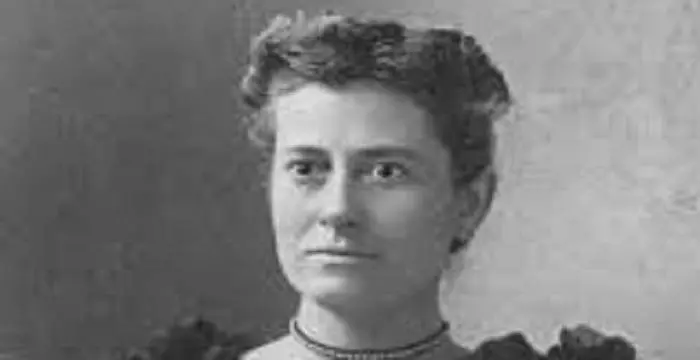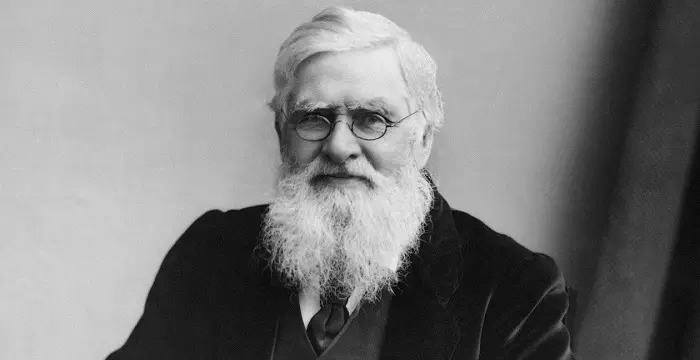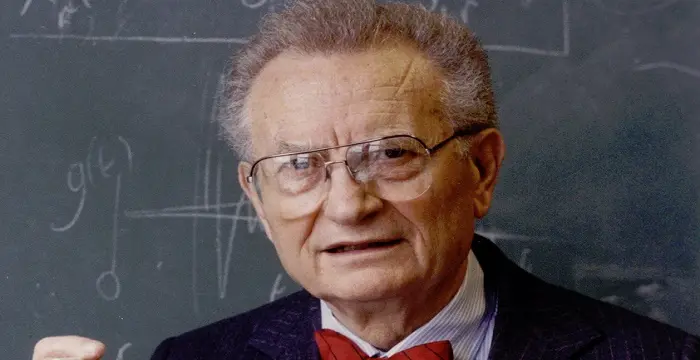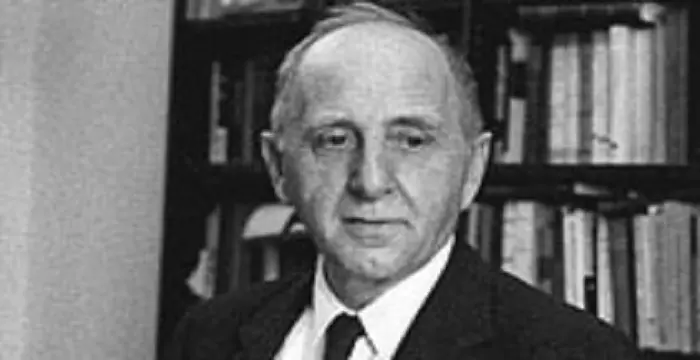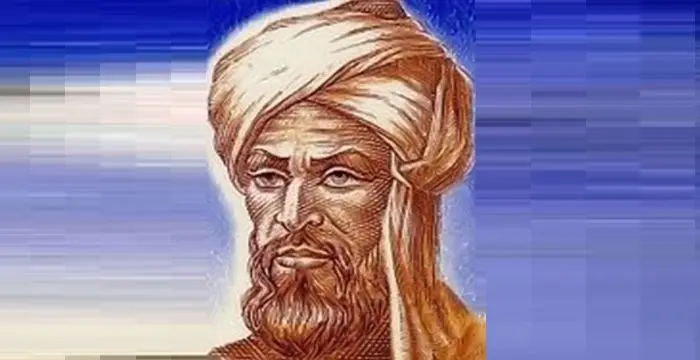
Muḥammad ibn Mūsā al-Khwārizmī - Geographers, Facts and Personal Life
Muḥammad ibn Mūsā al-Khwārizmī's Personal Details
Al-Khwarizmi was a Persian mathematician, astronomer, and geographer
| Information | Detail |
|---|---|
| Birthday | 780 |
| Died on | January 1, 850 |
| Nationality | Persian |
| Famous | Intellectuals & Academics, Geographers, Mathematicians, Astronomers |
| Known as | Algaurizin, Abū ʿAbdallāh Muḥammad ibn Mūsā al-Khwārizmī, Algoritmi |
| Discoveries / Inventions |
|
| Birth Place | Khwarezm |
| Religion | Islam, Zoroastrianism, Sunni Islam |
| Gender | Male |
| Born in | Khwarezm |
| Famous as | Mathematician |
| Died at Age | 70 |
// Famous Astronomers
Jabir Ibn Hayyan
Jabir Ibn Hayyan was a medieval era polymath. Check out this biography to know about his life, works and achievements.
Isaac Newton
Isaac Newton was an English scientist and mathematician, who discovered gravitation and Newtonian Mechanics. Read this biography to find more on his life.
Henrietta Swan Leavitt
Henrietta Swan Leavitt was an American astronomer. Check out this biography to know about her childhood, family, personal life, discoveries, achievements, etc.
Muḥammad ibn Mūsā al-Khwārizmī's photo
Who is Muḥammad ibn Mūsā al-Khwārizmī?
Al-Khwarizmi was a Persian mathematician, astronomer, and geographer who lived during the Abbasid Caliphate which was the third of the Islamic caliphates to succeed the Islamic prophet Muhammad. A scholar in the House of Wisdom in Baghdad, his contribution to the field of mathematics, especially algebra, has been phenomenal. He was considered the original inventor of algebra by the scholars in Renaissance Europe though later it became known that his work is based on older Indian or Greek sources. But the fact that the word “Algebra” is derived from ‘al-jabr’, one of the two operations he used to solve quadratic equations is a testimonial to the role he played in the development of this particular field of mathematics. Some of his work was based on Persian and Babylonian astronomy, Indian numbers, and Greek mathematics and he was known for his systematic approach to solving linear and quadratic equations. Apart from mathematics, he was also highly skilled and knowledgeable in the fields of astronomy and geography. He corrected and revised Ptolemy's data for Africa and the Middle East, and also wrote on the subject of astrology. His works also include a treatise on the Hebrew calendar in which he describes the 19-year intercalation cycle
// Famous Geographers
Jabir Ibn Hayyan
Jabir Ibn Hayyan was a medieval era polymath. Check out this biography to know about his life, works and achievements.
Hipparchus
Hipparchus was a Greek astronomer and mathematician. This biography profiles his childhood, life, achievements and timeline.
Alfred Russel Wallace
Alfred Russel Wallace was a British scientist and explorer, best known for discovering the concept of evolution by natural selection. This biography of Alfred Wallace provides information about his childhood, life, achievements, works & timeline.
Childhood & Early Life
He was born as Abū ‘Abdallāh Muḥammad ibn Mūsā al-Khwārizmī in a Persian family in Chorasmia c. 780. Not much is known about his early life for lack of well-documented information.
It is often assumed from his name that he came from Khwarezm (Khiva), then in Greater Khorasan. However some other sources suggest that he might have come from Qutrubbul (Qatrabbul), a viticulture district near Baghdad.
Career
Al-Khwarizmi lived during the Abbasid Caliphate, and he had a very meaningful career at the court of the Abbasid caliph al-Mamun. The caliph had a deep interest in science and philosophy and encouraged Al-Khwarizmi’s pursuits in scholarly investigations.
Since he lived several centuries ago, many facts regarding his professional life are also obscure. According to some sources, he may have been attached to al-Mamun's scientific academy in Baghdad, the House of Wisdom (Arabic, Bayt al-Hikma).
He is believed to have participated in the calculation of the length of a degree of latitude during this time. He was a part of a major project to determine the circumference of the Earth, following which he helped to make a world map for the caliph, overseeing 70 geographers.
He was a brilliant mathematician whose publication ‘On the Calculation with Hindu Numerals’, written around 825 CE played a major role in spreading the Indian system of numeration throughout the Middle East and Europe. The book was later also translated into Latin as ‘Algoritmi de numero Indorum’.
In 830 he completed his mathematical book ‘The Compendious Book on Calculation by Completion and Balancing’ (al-Kitāb al-mukhtaṣar fī ḥisāb al-jabr wal-muqābala) in which he provided an exhaustive account of solving polynomial equations up to the second degree.
The book was translated into Latin twice in the 12th century. It was a seminal work in which solutions to several hundred simple quadratic equations by analysis as well as by geometrical methods were provided.
He revised Ptolemy's ‘Geography’ and corrected his data for Africa and the Middle East, publishing his work in his ‘Kitāb Ṣūrat al-Arḍ’ which he finished in 833. He gave a list of 2402 coordinates of cities and other geographical features based on those in the Geography of Ptolemy but with improved values for the Mediterranean Sea, Asia, and Africa. Today, there is only one surviving copy of ‘Kitāb Ṣūrat al-Arḍ’, which is kept at the Strasbourg University Library.
He made invaluable contributions to the field of trigonometry as well. He is credited to have developed trigonometric tables containing sine functions which were later used to help form tangent functions.
His works in mathematics also led to the concept of differentiation which was derived from his development of the calculus of two errors.
In his book ‘Astronomical tables of Sind and Hind’, he provided tables for the movements of the sun, the moon and the five planets known at the time. The work consisting of approximately 37 chapters on calendrical and astronomical calculations and 116 tables with calendrical, astronomical and astrological data, as well as a table of sine values ushered in a new era in Islamic astronomy.
Al-Khwarizmi's mathematical works are so significant that scholars in the Renaissance Europe believed him to be the original inventor of algebra. He is credited to have introduced the Arabic numerals, based on the Hindu-Arabic numeral system developed in Indian mathematics, to the Western world.
The magnitude of his contribution to mathematics is apparent from the fact that both the terms "algorithm" and "algorism" are derived from the Latinized forms of Al-Khwarizmi's name, ‘Algoritmi’ and Algorismi’, respectively.
Major Work
Al-Khwarizmi is best known for his comprehensive book on mathematics, ‘The Compendious Book on Calculation by Completion and Balancing’ in which an exhaustive account of solving the positive roots of polynomial equations up to the second degree was provided. The book also deals with computations involved in Islamic rules of inheritance.
Personal Life & Legacy
He died in c. 850.
// Famous Mathematicians
Grigori Perelman
Grigori Perelman is a Russian mathematician who is best known for his contributions to Riemannian geometry and geometric topology. Check out this biography to know about his childhood, family life, achievements and fun facts about him.
Terence Tao
Terence Tao is an Australian- American mathematician who has contributed enormously to the field of mathematics. Check out this biography to know about his childhood, family life and achievements.
Isaac Newton
Isaac Newton was an English scientist and mathematician, who discovered gravitation and Newtonian Mechanics. Read this biography to find more on his life.
Muḥammad ibn Mūsā al-Khwārizmī biography timelines
- // 780He was born as Abū ‘Abdallāh Muḥammad ibn Mūsā al-Khwārizmī in a Persian family in Chorasmia c. 780. Not much is known about his early life for lack of well-documented information.
- // 825He was a brilliant mathematician whose publication ‘On the Calculation with Hindu Numerals’, written around 825 CE played a major role in spreading the Indian system of numeration throughout the Middle East and Europe. The book was later also translated into Latin as ‘Algoritmi de numero Indorum’.
- // 830In 830 he completed his mathematical book ‘The Compendious Book on Calculation by Completion and Balancing’ (al-Kitāb al-mukhtaṣar fī ḥisāb al-jabr wal-muqābala) in which he provided an exhaustive account of solving polynomial equations up to the second degree.
- // 833He revised Ptolemy's ‘Geography’ and corrected his data for Africa and the Middle East, publishing his work in his ‘Kitāb Ṣūrat al-Arḍ’ which he finished in 833. He gave a list of 2402 coordinates of cities and other geographical features based on those in the Geography of Ptolemy but with improved values for the Mediterranean Sea, Asia, and Africa. Today, there is only one surviving copy of ‘Kitāb Ṣūrat al-Arḍ’, which is kept at the Strasbourg University Library.
- // 850He died in c. 850.
// Famous Intellectuals & Academics
Bertil Gotthard Ohlin
Bertil Gotthard Ohlin was a famous Swedish economist. This biography profiles his childhood, family life & achievements.
Emily Greene Balch
Emily Greene Balch was an American economist, sociologist and pacifist who won the 1946 Nobel Peace Prize. This biography of Emily Greene Balch provides detailed information about her childhood, life, achievements, works & timeline.
Martin Buber
One of the greatest philosophers to have ever walked on earth, Martin Buber contributions to philosophy is a long-standing one. Explore all about his profile, childhood, life and timeline here.
Paul Samuelson
Nobel laureate Paul Anthony Samuelson is referred to as the ‘Father of Modern Economics’. This biography profiles his childhood, life, career, achievements and interesting facts about him.
Lao Tzu (Laozi)
Lao Tzu was a legendary Chinese philosopher who wrote the important “Daodejing”. This biography profiles his childhood, life, career, achievements and timeline.
Simon Kuznets
Simon Kuznets was a noted Russian-American economist, statistician, demographer, and economic historian. Check out this biography to know about his childhood, family life, achievements and other facts related to his life.
Muḥammad ibn Mūsā al-Khwārizmī's FAQ
When was Muḥammad ibn Mūsā al-Khwārizmī died?
Muḥammad ibn Mūsā al-Khwārizmī was died at 0850-01-01
Where was Muḥammad ibn Mūsā al-Khwārizmī died?
Muḥammad ibn Mūsā al-Khwārizmī was died in Baghdad
Which age was Muḥammad ibn Mūsā al-Khwārizmī died?
Muḥammad ibn Mūsā al-Khwārizmī was died at age 70
Where is Muḥammad ibn Mūsā al-Khwārizmī's birth place?
Muḥammad ibn Mūsā al-Khwārizmī was born in Khwarezm
What is Muḥammad ibn Mūsā al-Khwārizmī nationalities?
Muḥammad ibn Mūsā al-Khwārizmī's nationalities is Persian
What is Muḥammad ibn Mūsā al-Khwārizmī's inventions/discoveries?
Mural Instrument, Sine Quadrant was invented (or discovered) by Muḥammad ibn Mūsā al-Khwārizmī
What is Muḥammad ibn Mūsā al-Khwārizmī's religion?
Muḥammad ibn Mūsā al-Khwārizmī's religion is Islam, Zoroastrianism, Sunni Islam
How famous is Muḥammad ibn Mūsā al-Khwārizmī?
Muḥammad ibn Mūsā al-Khwārizmī is famouse as Mathematician


